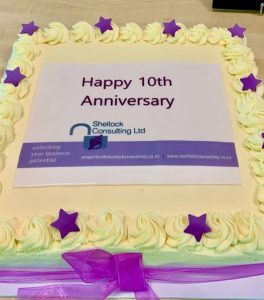COVID-19 – Wage Subsidies, Income Relief Payments and Small Business Loans
So here we are at Level 2, with life starting to move closer toward “normal”. But as we look to the future, uncertainty around the full extent of the economic impact of COVID-19 remains high and we are all at the point where we need to choose the direction we must take.
While many of us head back to our workplaces, kids are back to school, we gather together socially, congregations start to meet again and sports teams regroup, there are also increasing numbers of people finding their positions are being made redundant. Headlines announce the significant numbers of 10s, 100s and 1,000s of positions being made redundant by large businesses – and then there are the many small businesses unable to sustain the losses who are also having to let employees go.
The Government continues to buffer the blows with the announcement of the Wage Subsidy Extension for Employers who are experiencing or projecting a 50% or greater loss in revenue due to COVID-19, and alongside that, the “COVID Income Relief Payment” for New Zealanders who have lost their jobs due to COVID-19.
But how do employers and employees treat these payments from a tax point of view? With the speed these subsidies have been introduced, it can be confusing knowing how these payments are to be treated, what is still available, when that ceases and what else is available. So, we summarise these below.
[These are current at the time of publication, but keep an eye out on new schemes, loans and subsidies.]
The Wage Subsidy – Employers and Employees
The 12 week subsidy
Many employers have already taken up this Wage Subsidy, which applies for the period 17 March 2020 to 9 June 2020. The payment is $585.80 per full time employee per week and $350 per part-time employee (under 20 hours per week normal hours) per week for 12 weeks.
The subsidy applies to businesses, self-employed and contractors.
The applicant needs to believe on reasonable grounds that their gross income would drop by at least 30% over a month from the previous year’s income. For new businesses or high growth businesses a different comparative period may be applied.
Some key tax points for the Wage Subsidy AND the Wage Subsidy Extension:
- The Wage Subsidy is not taxable income for the employer/business that receives it.
- It is not subject to GST.
- It is not a deductible expense when on-paid to the employee for the employer. This results in it being tax neutral for businesses.
- The subsidy is subject to PAYE and other payroll obligations such as ACC as normal when paid to an employee.
- For an employee, the payment is “taxable remuneration” and subject to PAYE, ACC levies, KiwiSaver contributions and student loan repayments at the date of payment.
- The employee must remain employed during the period of the Wage Subsidy.
- The employer must make their best efforts to pay the employee their normal wages (or at least 80%) and no less than the Wage Subsidy (if this is less than the normal wages).
- Employees who normally derive less than the Wage Subsidy paid to the employer are not required to be paid the full subsidy, however the excess is to be used to support other employees whose wages are greater than their subsidy.
- Employees KiwiSaver contributions may be suspended where they are receiving the Wage Subsidy by requesting a “savings suspension” from Inland Revenue. The requirements for a savings suspension are:
- The employee must have been a contributing member for one year or more (unless they can show evidence of financial hardship).
- The savings suspension is for a minimum three months (unless the employer agrees).
- The savings suspension can be for up to one year, but can be ended early, or an extension applied for.
If the employer does not qualify (either at the outset or later) they are required to repay the subsidy to the extent of the disqualification. An example might be where the income level did not drop as expected (100% repayable), or the employee left the business (repay the weeks the employee did not receive the subsidy).
The 8 week extension
The Wage Subsidy had a massive uptake by businesses around New Zealand but is due to expire. As a result, the Government has announced an eight week extension available from 10th June through to 1st September 2020.
The main change is that the criteria is for businesses experiencing or expecting a 50% or more decrease in gross revenue (due to COVID-19) compared to the closest comparative period last year (or alternative test for new or growing business), based on the immediate last 30 days prior to applying. Note that this is an immediate 30 day prior test and not a comparative month test.
Again, if the employer no longer qualifies, they must pay the excess back.
Working for Families – In-Work Tax Credit
From 1 July 2020 the requirement for working families to work a minimum number of hours each week to get the in-work tax credit will be removed. Prior to 1 July 2020 (and pre-COVID-19), couples needed to work a combined 30 hours per week and single parents at least 20 hours per week to be eligible. [The old rules were partly suspended during COVID-19 response]. This change means that those who have had working hours reduced or have had to stop working due to COVID-19, but are still being paid or receiving the Wage Subsidy, will still receive the in-work tax credit. (The in-work tax credit is not available to families that are receiving an income tested benefit, student allowance or earnings-related ACC payments).
The Wage Subsidy – Self-Employed
As already noted, the Wage Subsidy can also be received by a self-employed person, but is taxable income.
Inland Revenue has stated its position that the Wage Subsidy payments are “compensation” per section CG 5B of the Income Tax Act and should be spread over the 12-week period rather than being entirely taxable at the time of receipt (e.g. if received at the end of March 2020 it would be spread over the 12 week period into the following tax year).
For self-employed people, the Wage Subsidy is not subject to ACC levies. this is because the payment is compensation for lost income (not earnings from performing work), however, to achieve this the subsidy should be returned as “Other Income” in the person’s IR3 return to ensure it is not subject to ACC levies.
COVID-19 Leave Support Scheme
The Leave Support Scheme is available for employers (including self-employed, sole traders and contractors) to pay employees who cannot work due to Ministry of Health guidelines recommending they stay at home, and they are unable to work from home.
The business must have experienced a 30% decline in actual or predicted revenue between January 2020 and 9 June 2020 over a month compared to the previous year due to COVID-19, or an equivalent period if the business has been operating less than one year.
It is paid as a lump sum at the same rates as the Wage Subsidy and covers 4 weeks per employee from the date an application is submitted. An employer can re-apply for the same person in the 4th week of the payment period. An employer can keep re-applying for the same employee as long is the payment is available (and criteria met). It is not clear how long the Leave Support Scheme will remain available for.
As with the Wage Subsidy:
- Leave Support is not taxable income for the employer/business that receives it.
- It is not subject to GST.
- It is not a deductible expense for the employer.
- Leave Support payments are subject to PAYE as normal when paid to an employee (e.g. PAYE, Student Loan, KiwiSaver, Child Support etc).
- Leave Support payments received by a self-employed person are taxable income.
- Leave Support payments do not affect leave entitlements that are owed.
An employer cannot receive the Wage Subsidy and Leave Support payments for the same employee at the same time.
Employers and employees should consider the implications on tax rates and Working for Families entitlements if payments are made outside of the usual pay cycle.
COVID Income Relief Payment
Alongside the Wage Subsidy, which is intended to retain employees, many businesses have been forced to make positions redundant. On the 25th May, a new temporary payment to support New Zealander’s who have lost their jobs due to COVID-19 was announced. The “COVID Income Relief Payment” is available for 12 weeks from the 8th June 2020. Payments will not be paid retrospectively for any period before 8th June 2020.
The payment is $490 a week to those who have lost full time work, and $250 for part-time work (15-29 hours per week). These payments are not subject to income tax, and therefore will not affect income related obligations or entitlements.
Who can get it?
- The COVID Income Relief Payment is available to New Zealand citizens and residents who normally live and work in New Zealand and who have lost (or will lose) all employment anytime between 1 March 2020 and 30 October 2020.
- People with partners who are still working may be eligible as long has their partner is earning less than $2,000 per week (i.e. there is a reduced means testing on this payment compared to a Job Seeker allowance).
- We assume that where couples both lose their jobs will each qualify for the payment.
- A self-employed person may be eligible if their business is no longer viable, with no upcoming work or income because of COVID-19 (and they meet all other criteria).
- A student may be eligible for the relief payment. If they or their partner also receive the Student Allowance, the relief payment will be at the part-time rate of $250 per week. However, if a student loses a full-time job, they (and their partner) may choose to switch to the Income Relief Payment instead of the Student Allowance.
- The person must:
- be available for and actively seeking work while taking the payment;
- be taking appropriate steps toward gaining new employment; and
- identify and take opportunities for employment, re-deployment and training.
Who can’t get it?
- A person cannot get the Income Relief Payment and Wage Subsidy (or Leave Support) payments at the same time.
- A person who receives (or will receive) a redundancy payment of $30,000 or more before tax, income protection insurance cover, or earnings-related ACC payments will not be eligible for Income Relief Payments.
- Those who were working less than 15 hours per week prior to termination of employment are not eligible. However, where the person normally worked 15 hours plus per week (for 12 weeks or more), but these reduced before becoming unemployed (due to COVID-19) they will qualify.
- It is not clear whether an employee who loses their job but is also receiving a Government benefit (e.g. National Superannuation) will qualify for this Income Relief Payment.
- You must be 18 years or older (or financially independent 16 or 17 years old).
We assume that some people, who may have already moved onto the Job Seeker allowance will be able to switch to this scheme for 12 weeks given the backdated nature of this package.
Those who do not qualify, or after the 12 week period has expired, may alternatively qualify for a Job Seeker allowance, but this has significantly different rules and criteria.
Small Business Cashflow Loan (SBCS)
Nothing in life is “free” – however, the Government has also made available to businesses “adversely affected by COVID-19”, a small business loan of up to $10,000 plus $1,800 per full-time equivalent employee (FTE) for businesses with 50 or fewer FTE’s, for a term of 5 years.
While interest accrues from the start of the loan, it will be remitted if the total loan is repaid within 12 months. That is as close to free as can be imagined!
If the loan is not repaid in full within 12 months, interest will be charged at the rate of 3% per annum for the entire term of the loan, and while repayments are not compulsory within the first 24 months, voluntary payments can be made over this period.
- The loan must be used for core operating costs and must not be passed on to shareholders or owners of the business.
- The SBCS is not subject to income tax or GST, and deductions can be claimed for expenditure funded by the loan. The interest will be tax deductible.
- Commonly owned businesses will be grouped to determine entitlement.
- Any Wages Subsidy you received (or qualified to receive) must have been no more than $351,480 to qualify for the loan.
- The maximum amount of the loan for employers is $100,000.
- Sole traders can receive a loan of up to $11,800.
- A business must be “viable” and have a business plan in place to ensure it remains viable and must retain evidence of the business’s ongoing viability.
This loan could provide a useful buffer for those businesses who know they are still viable, but need a cash-flow leg up to get them through the initial impact. To get the loan,
Applications for the loan close on 12th June 2020, although the period may be extended do not rely on this if you are thinking of applying.
The key aim of all these initiatives is to “cushion the blow” for both businesses and individuals with retaining as many in employment as possible, and temporarily support the newly unemployed as we navigate this uncharted territory. See our list of “Useful Links” below for more detailed information regarding these subsidies and loans.
If you need any further advice, talk to us at Shellock Consulting.
Sources / Useful Links








